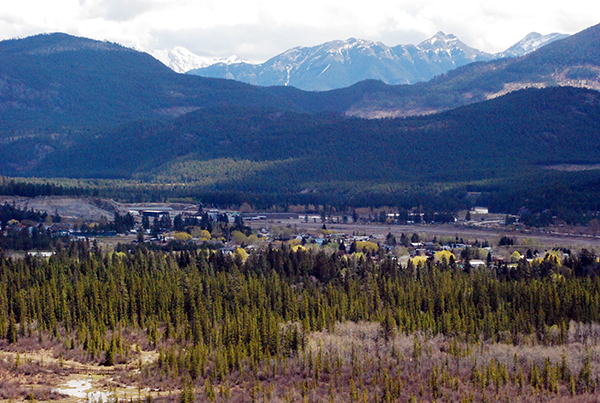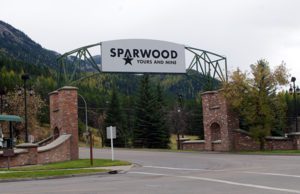Home »

Property assessments climb across the region

In the next few days, owners of about 150,000 properties throughout the Kootenay Columbia region can expect to receive their 2023 assessment notices, which reflect market value as of July 1, 2022.
Every municipality in the region experienced increases in value.
“Most homeowners throughout the Kootenay Columbia region can expect an increase in assessed value between five and 20% with a handful of communities higher than that range,” said Kootenay Columbia Deputy Assessor Sharlynn Hill.
“Property owners need to consider that 2023 assessments are based on the market value as of July 1, 2022, meaning what your home could have sold for last summer and not necessarily what it would sell for in today’s shifting market.”
As B.C.’s provider of property assessment information, BC Assessment collects, monitors and analyzes property data throughout the year.
Overall, Kootenay Columbia’s total assessments increased from $60.6 billion in 2022 to over $69.7 billion this year. Almost $883 million of the region’s updated assessments is from new construction, subdivisions and the rezoning of properties.
BC Assessment’s Kootenay Columbia region covers the southeast portion of the province from the Alberta border west to the Okanagan and from the US border north to Golden and Revelstoke.
The summaries below provide estimates of typical 2022 versus 2023 assessed value changes of residential properties for each community throughout the region.
These examples demonstrate market trends for single-family residential properties by geographic area (as per BC Assessment):
| Single Family Home Changes by Community | 2022 Typical Assessed Value
as of July 1, 2021 |
2023 Typical Assessed Value
as of July 1, 2022 |
%
Change |
| City of Castlegar | $422,000 | $497,000 | +18% |
| City of Cranbrook | $396,000 | $446,000 | +13% |
| City of Fernie | $705,000 | $838,000 | +19% |
| City of Grand Forks | $362,000 | $403,000 | +11% |
| City of Greenwood | $222,000 | $235,000 | +6% |
| City of Kimberley | $403,000 | $472,000 | +17% |
| City of Nelson | $644,000 | $675,000 | +5% |
| City of Revelstoke | $718,000 | $801,000 | +12% |
| City of Rossland | $500,000 | $579,000 | +16% |
| City of Trail | $302,000 | $350,000 | +16% |
| District of Elkford | $290,000 | $344,000 | +18% |
| District of Invermere | $527,000 | $589,000 | +12% |
| District of Sparwood | $324,000 | $415,000 | +28% |
| Town of Creston | $360,000 | $414,000 | +15% |
| Town of Golden | $518,000 | $553,000 | +7% |
| Village of Canal Flats | $277,000 | $285,000 | +3% |
| Village of Fruitvale | $383,000 | $418,000 | +9% |
| Village of Kaslo | $393,000 | $470,000 | +20% |
| Village of Midway | $293,000 | $338,000 | +15% |
| Village of Montrose | $410,000 | $437,000 | +7% |
| Village of Nakusp | $342,000 | $387,000 | +13% |
| Village of New Denver | $286,000 | $361,000 | +26% |
| Village of Radium Hot Springs | $397,000 | $454,000 | +14% |
| Village of Salmo | $319,000 | $375,000 | +18% |
| Village of Silverton | $312,000 | $394,000 | +26% |
| Village of Slocan | $295,000 | $381,000 | +29% |
| Village of Warfield | $370,000 | $385,000 | +4% |
*All data calculated based on median values.
These examples demonstrate market trends for strata residential properties (e.g. condos/townhouses) by geographic area for select urban communities:*
| Strata Home Changes (Condos/Townhouses)
By Community |
2022 Typical Assessed Value
as of July 1, 2021 |
2023 Typical Assessed Value
as of July 1, 2022 |
%
Change |
| City of Cranbrook | $221,000 | $247,000 | +12% |
| City of Nelson | $513,000 | $559,000 | +9% |
*All data calculated based on median values.
BC Assessment’s website at bcassessment.ca includes more details about 2023 assessments, property information and trends such as lists of 2023’s top valued residential properties across the province.
The website also provides self-service access to a free, online property assessment search service that allows anyone to search, check and compare 2022 property assessments for anywhere in the province. Property owners can unlock additional property search features by registering for a free BC Assessment custom account to check a property’s 10-year value history, store/access favourites, create comparisons, monitor neighbourhood sales, and use our interactive map.
“Property owners can find a lot of valuable information on our website including answers to many assessment-related questions, but those who feel that their property assessment does not reflect market value as of July 1, 2022 or see incorrect information on their notice, should contact BC Assessment as indicated on their notice as soon as possible in January,” said Deputy Assessor Hill.
“If a property owner is still concerned about their assessment after speaking to one of our appraisers, they may submit a Notice of Complaint (Appeal) by January 31, for an independent review by a Property Assessment Review Panel,” added Hill.
The Property Assessment Review Panels, independent of BC Assessment, are appointed annually by the provincial government, and typically meet between February 1 and March 15 to hear formal complaints.
“It is important to understand that increases in property assessments do not automatically translate into a corresponding increase in property taxes,” explained Hill. “As noted on your Assessment Notice, how your assessment changes relative to the average change in your community is what may affect your property taxes.”
BC Assessment’s website provides a listing of property assessments and sales to help property owners understand their property’s market value and provide comparable sales information.
Go to bcassessment.ca and use “Find your property assessment” to learn about your property.
Lead image: The Village of Canal Flats experienced the smallest percentage increase in assessed value according to BC Assessment. e-KNOW file photo
e-KNOW







